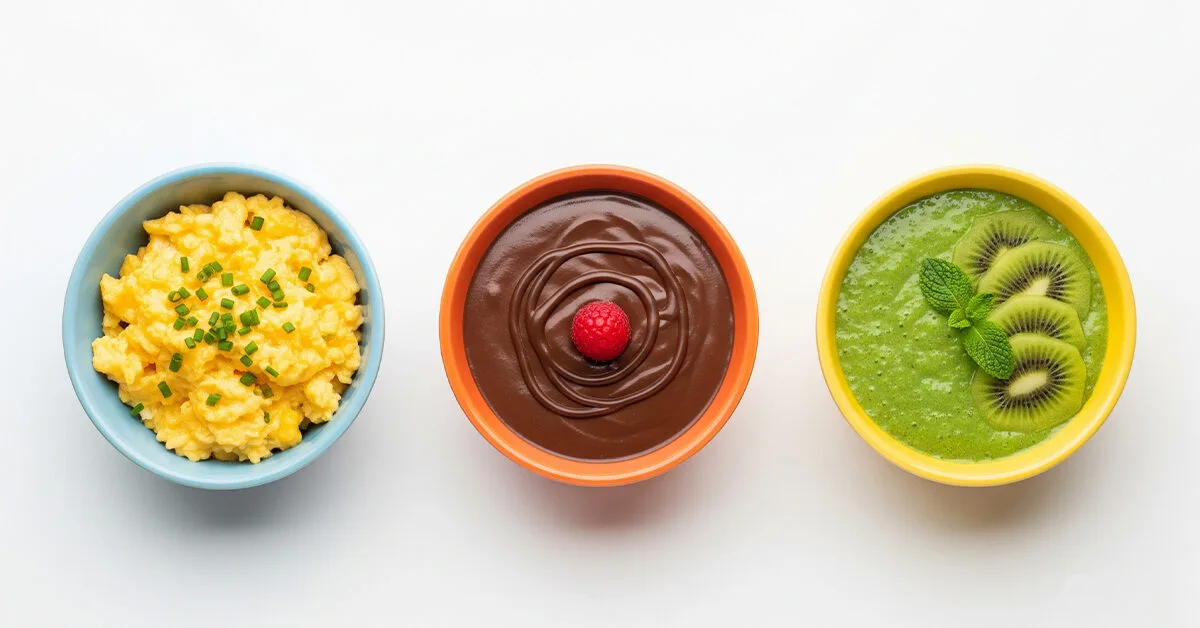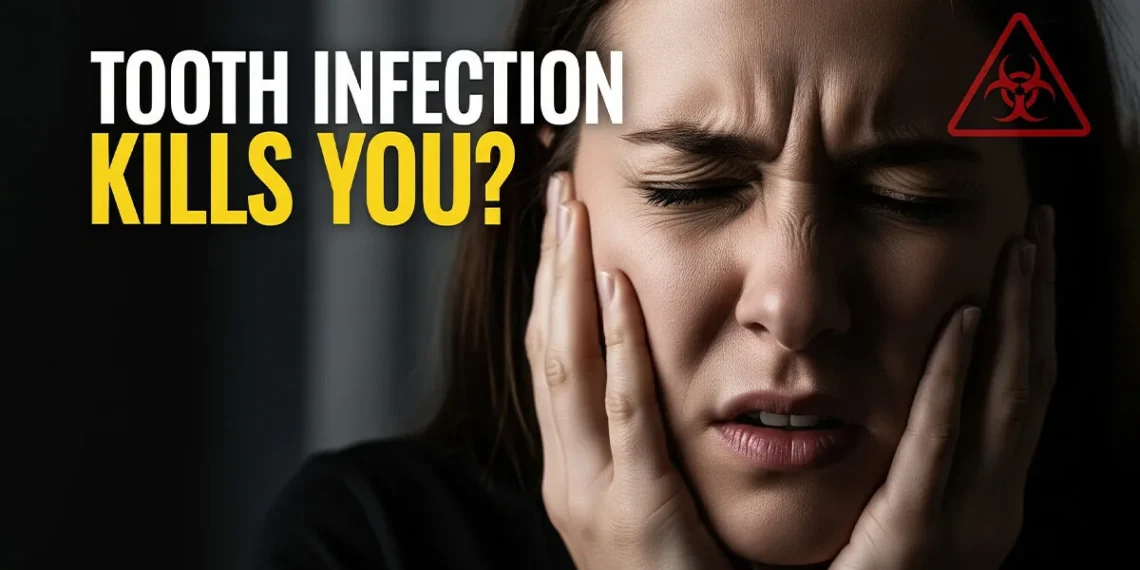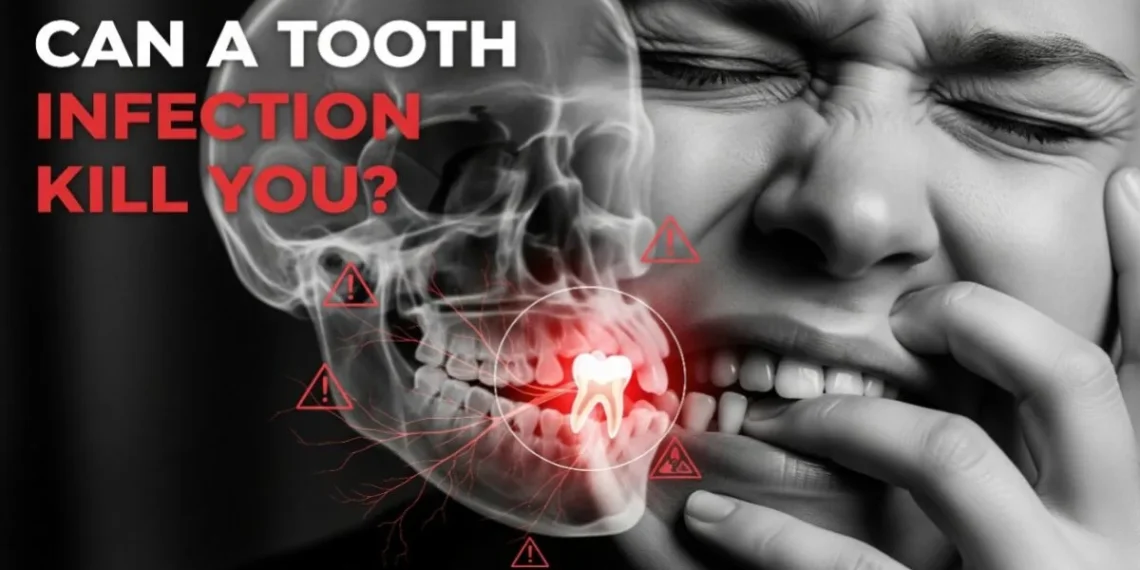Introduction
Getting your wisdom teeth removed? You’re not alone. Millions of people go through this minor oral surgery every year, usually in their late teens or early twenties. While the procedure itself is fairly routine, the recovery process requires special care, especially when it comes to what you eat after wisdom teeth removal.
Choosing the right foods can speed up your healing, reduce pain, and prevent complications like dry socket or infections. But here’s the tricky part: your usual meals won’t cut it. Crunchy chips, chewy bread, or even your favorite spicy noodles are off the table for a while.
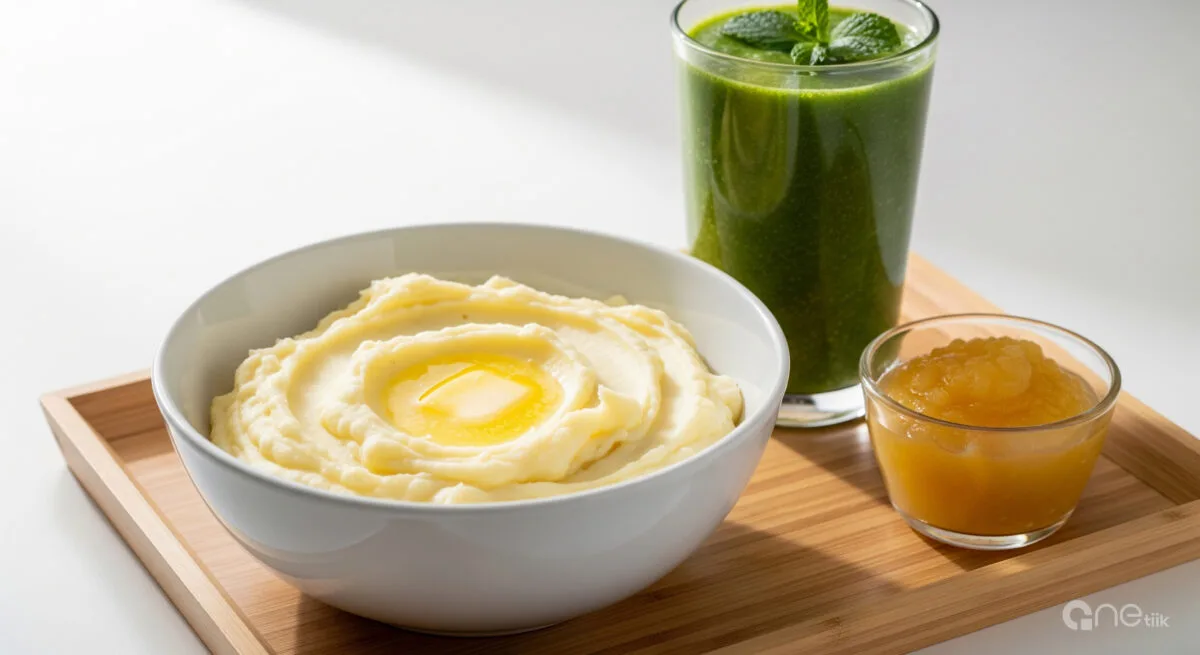
We’ve put together a complete list of 30+ dentist-recommended soft foods to eat after wisdom teeth Removal, from creamy soups to soothing smoothies. Whether it’s day 1 after surgery or you’re a week in, you’ll find tasty, safe options to keep you full without hurting your healing gums.
Let’s dive into the soft, smooth world of wisdom tooth recovery food!
Here’s the next section draft for:
Why Soft Foods Matter After Oral Surgery
After wisdom teeth removal, your mouth goes through a delicate healing process. The gums are swollen, the wound site is fresh, and any pressure, heat, or rough texture can lead to irritation or worse, serious complications. That’s why eating soft foods isn’t just a suggestion, it’s a crucial part of recovery.
How Your Mouth Heals After Extraction
When a wisdom tooth is pulled, a small hole or socket is left behind. Over the next few days, your body forms a blood clot to protect that area and begins healing. If that clot gets disturbed by sucking on a straw, chewing tough foods, or even brushing too hard, it can lead to dry socket, a painful condition that delays healing and exposes bone or nerves.
What Makes a Food “Safe” After Surgery?
Soft foods are:
- Gentle on your gums
- Easy to chew and swallow
- Less likely to get stuck in the extraction site
- Soothing to sore or inflamed areas
- Supportive of hydration and nutrition
For at least the first 3–5 days, your focus should be on foods that require no chewing or very minimal pressure. Think of textures like yogurt, pudding, mashed potatoes, and smoothies. As the days pass and your gums start to feel better, you can slowly reintroduce semi-soft options.
What Happens If You Eat the Wrong Foods?
Eating crunchy, sticky, or spicy foods too soon can:
- Dislodge your blood clot (leading to dry socket)
- Cause bleeding or pain
- Increase swelling or infection risk
- Slow down the entire healing process
That’s why your wisdom teeth recovery diet isn’t just about comfort, it’s about protecting your body while it does the hard work of healing.
Here’s the draft for:
Top 30 Soft Foods to Eat After Wisdom Teeth Removal
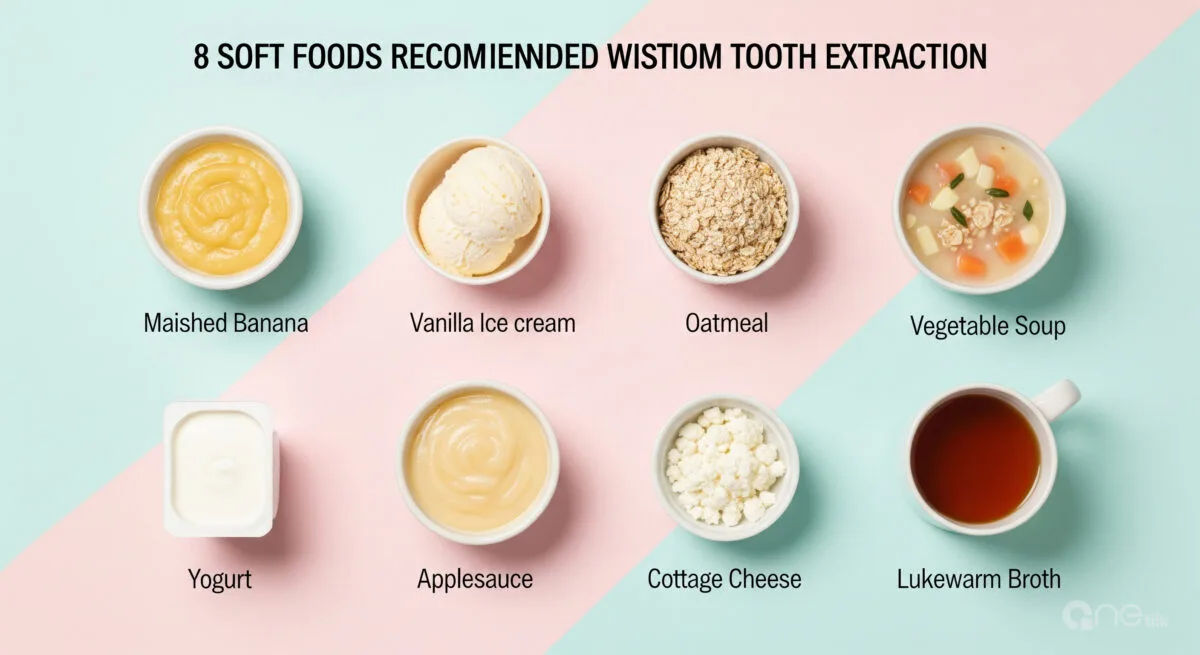
Now that you know why soft foods are essential, let’s explore what exactly you can eat during recovery. Whether you’re on day 1 after surgery or transitioning back to normal meals, this list covers everything from liquids to soft proteins and even satisfying desserts.
To make it easier, we’ve grouped these into categories for every stage of healing.
Liquid & Pureed Foods (Ideal for Day 1–2)
These are your go-to options immediately after surgery. They’re super easy on the gums, don’t require chewing, and help keep you hydrated.
- Broth or Clear Soup – Warm (not hot) broth is soothing and easy to swallow. Avoid chunks or spices.
- Smoothies (no straw) – Blend bananas, yogurt, and protein powder. Always drink from a spoon or cup, no straws!
- Applesauce – Naturally sweet and requires zero chewing.
- Protein Shakes – Great for energy when you’re not eating solids. Use a spoon, not a straw.
- Ice Cream – Soft, cold, and comforting—but avoid crunchy toppings.
- Milkshakes – Same rules as smoothies. Delicious and filling, but skip the straw.
Keywords: can I eat soup after wisdom teeth removal, soft food after oral surgery, soft foods day 1 after surgery
Soft Dairy & Protein Options (Day 2–5)
These provide much-needed protein and are easier to chew as your mouth starts to recover.
- Scrambled Eggs – Fluffy and protein-rich; avoid seasoning early on.
- Greek Yogurt – Thick, cool, and probiotic-rich. Choose plain or vanilla.
- Cottage Cheese – High in protein and easy to swallow.
- Tofu – Soft and versatile, can be blended or mashed.
- Mashed Beans or Lentils – A hearty vegetarian option with fiber and iron.
Soft Carbs & Grains (Day 3–7)
Great for energy and filling meals. Just ensure they’re overcooked and not sticky.
- Mashed Potatoes – A classic post-surgery favorite; smooth and buttery.
- Oatmeal – Soft, warm comfort food. Avoid oats with nuts or fruits.
- Overcooked Pasta – Choose soft pasta like elbows or shells. Avoid al dente.
- Soft Rice or Rice Porridge – Plain, simple, and easy on the stomach.
- Soaked Bread or Roti Pieces – Soak in broth or milk to make them mushy.
Soft Fruits & Veggies (Pureed or boiled only)
Packed with nutrients and gentle when cooked or mashed.
- Avocados – Creamy and packed with healthy fats.
- Mashed Bananas – Naturally soft and potassium-rich.
- Pumpkin Puree – Can be eaten warm with a little cinnamon.
- Boiled Carrots (Mashed) – Soft, sweet, and vitamin-rich.
- Steamed Zucchini or Squash – Mild, mushy, and good for digestion.
Soft Desserts & Extras (Safe and satisfying)
A little sweetness goes a long way; just avoid anything sticky or crumbly.
- Pudding – Chocolate, vanilla, or fruit-flavored.
- Custard – Soft and creamy; feels great on sore gums.
- Jell-O or Gelatin – Wobbly, easy to swallow, and fun to eat.
- Ice Pops – Help reduce swelling while offering hydration.
- Soft Cake (No Crust) – Only when healing improves; moist and chew-free.
Bonus: Nutritious Blends & Easy Combos
Here are a few smart ideas to mix and match.
- Smoothie Bowls – Blend banana + yogurt + oats
- Avocado-Egg Mash – Creamy, rich, and protein-packed
- Potato + Cottage Cheese – Mash together for a filling bowl
- Oatmeal + Mashed Banana – Naturally sweet and hearty
- Lentil Soup Puree – Warm, rich in iron and protein
For more food-specific guidance after wisdom tooth removal, 50 Best Soft Foods to Eat After Tooth Extraction.
Recovery Timeline: What to Eat Day-by-Day

Every day after your wisdom teeth removal brings small improvements, but you still need to be cautious about what you eat. Here’s a day-by-day guide to help you gradually transition from liquids to soft solids, safely and pain-free.
Day 1: Liquids Only
Your mouth is sore, swollen, and possibly bleeding a little. Stick to cold or room-temperature liquid-only foods to avoid irritating the wound.
✅ Best foods:
- Broth (lukewarm)
- Smoothies (no straw!)
- Apple juice
- Ice cream
- Protein shakes
- Gelatin/Jell-O
⚠️ Avoid:
- Hot foods and drinks
- Acidic juices (like orange juice)
- Straws (can cause dry socket)
Day 2–3: Introduce Very Soft Foods
Swelling may still be present, but the bleeding should reduce. Start including blended or mashed soft foods.
✅ Best foods:
- Mashed potatoes
- Applesauce
- Scrambled eggs
- Greek yogurt
- Cottage cheese
- Pureed fruits
- Ice pops
⚠️ Avoid:
- Chewy foods
- Spices
- Chewing on the extraction site
Day 4–5: Soft Solids and Smooth Meals
You should be feeling more comfortable now. This is a good time to include more variety, as long as it’s soft, moist, and doesn’t require much chewing.
✅ Best foods:
- Oatmeal
- Boiled pasta
- Avocado mash
- Soft rice
- Steamed veggies (mashed)
- Mashed lentils
📅 Day 6–7: Semi-Soft Meals, More Texture
Most people can start adding lightly textured foods by now, but nothing too crunchy or sticky yet.
✅ Best foods:
- Soft bread soaked in soup
- Tofu stir-fry (very soft)
- Soft cake without crust
- Rice with mashed beans
- Smoothie bowls
Week 2 Onward: Slowly Return to Normal Diet
Healing is usually complete, but listen to your body. Continue avoiding tough, crunchy foods for a few more days.
✅ You may now try:
- Chewed pasta
- Regular rice
- Steamed veggies with bite
- Tender meats (chicken/fish, shredded)
⚠️ Still Avoid (for 2+ weeks):
- Popcorn
- Chips or crackers
- Nuts and seeds
- Gum and sticky candy
💡 Tip: If a food hurts to chew or feels uncomfortable, it’s too soon. Go back a step and try again later.
Here’s the draft for:
Foods to Avoid After Wisdom Tooth Extraction
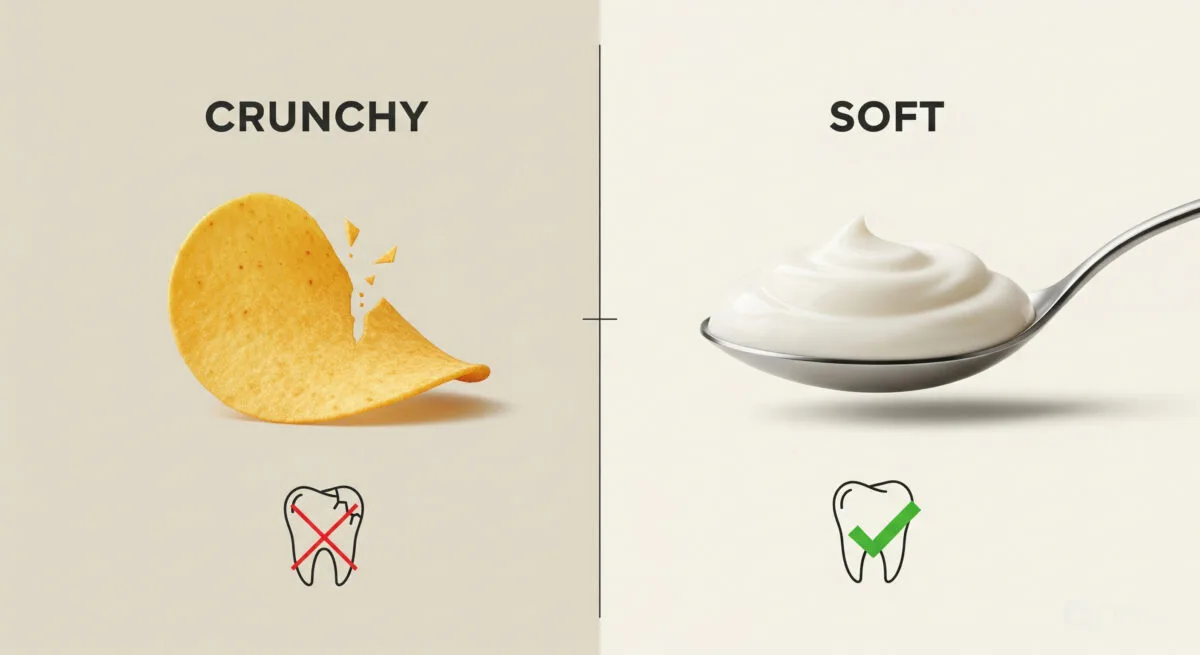
Eating the wrong foods after your wisdom teeth removal can slow healing, increase pain, and even lead to serious complications like dry socket or infection. To ensure a smooth recovery, here are the foods you should strictly avoid at least for the first 7 to 10 days.
1. Crunchy Foods
These can break into tiny pieces and get stuck in your extraction site.
🚫 Avoid:
- Chips
- Crackers
- Granola
- Toasted bread
- Popcorn
2. Sticky, Chewy, or Hard Foods
These require jaw movement and risk reopening your wound.
🚫 Avoid:
- Gum
- Caramel
- Toffee
- Hard candies
- Chewy meat or beef jerky
3. Spicy and Acidic Foods
Spices and acids can irritate sensitive gums and delay healing.
🚫 Avoid:
- Chili sauces
- Hot curry
- Vinegar-based foods
- Citrus fruits (like oranges, lemons)
- Tomato-based sauces
4. Carbonated & Hot Beverages
Both extremes, fizzy or steaming, can disrupt clot formation and cause pain.
🚫 Avoid:
- Soda
- Beer or wine
- Hot coffee or tea
- Energy drinks
5. Drinking with a Straw
Sucking action can dislodge the blood clot and lead to dry socket, one of the most painful complications post-surgery.
🚫 Avoid straws for at least 7–10 days, even for liquids like smoothies or milkshakes.
6. Foods That Are Too Hot or Too Cold
Extreme temperatures can aggravate sensitive tissues.
🚫 Avoid:
- Piping hot soups
- Frozen drinks
- Ice-cold smoothies (let them sit for a few minutes)
📝 Pro Tip
If it’s crunchy, sticky, or requires effort to chew, skip it. Your mouth will thank you later.
Tips for Eating Comfortably Post-Surgery
Even the softest foods can feel challenging after wisdom teeth removal. Your jaw might feel stiff, your gums tender, and your appetite low. These smart eating tips will help you stay nourished and pain-free while supporting a faster recovery.
1. Eat Slowly & Mindfully
Take small spoonfuls and chew very gently (if needed). Rushing can cause accidental bites on the inside of your mouth or disturb the healing site.
2. Chew on the Opposite Side
If only one side of your mouth had a tooth removed, chew on the unaffected side. If both sides were treated, avoid chewing as much as possible and stick to liquids and mashed foods for a few days.
3. Choose Lukewarm or Cool Foods
Foods that are too hot can irritate sensitive gum tissue. Opt for room-temperature soups, chilled smoothies, or cool yogurt.
4. Skip the Straw (Really!)
It might seem harmless, but even a light sucking motion can cause dry socket, a painful condition that delays healing. Always drink straight from the cup or use a spoon.
5. Stay Hydrated Between Meals
Sip water regularly throughout the day but gently. Avoid fizzy drinks and alcohol.
6. Rinse Gently After Meals
Use warm saltwater (not mouthwash) 24 hours after your surgery to rinse away food particles. This helps reduce infection and keeps the wound clean.
📌 Saltwater Mix Tip:
1/2 teaspoon of salt in a glass of warm water – swish gently for 30 seconds.
7. Prep Meals in Advance
Before your surgery, prepare and store soft foods like mashed potatoes, broth, or smoothies. You won’t feel like cooking while recovering.
8. Eat Sitting Up
Lying down while eating can increase the risk of choking or food particles settling in the extraction site. Sit upright and relaxed.
9. Stop If You Feel Pain While Eating
If a bite feels uncomfortable, it’s a sign to stop or switch to something gentler. Don’t push yourself—healing is your top priority.
10. Be Patient with Your Progress
Your body heals best when it’s nourished, rested, and not rushed. Everyone’s timeline is different, so focus on comfort over speed.
Here’s the next section draft:
Expert Advice: When to Call Your Dentist
While mild discomfort, swelling, and limited chewing ability are normal after wisdom teeth removal, certain symptoms can signal that something’s wrong. Here’s when you should stop relying on soft foods and home care and call your dentist immediately.
1. Severe or Worsening Pain After Day 3
A gradual decrease in pain is expected. But if the pain increases after Day 3 or becomes sharp and intense, it could indicate dry socket or infection.
2. Bleeding That Doesn’t Stop After 24 Hours
Slight oozing is normal during the first 24 hours. If you experience persistent bleeding, soaking gauze pads rapidly, or blood in your saliva after the first day, call your oral surgeon.
3. Signs of Infection
Infections may develop in the extraction site if food gets trapped or oral hygiene is poor. Watch for:
- Swollen cheeks or jaw (getting worse after Day 3)
- Foul taste or smell in the mouth
- Pus or discharge
- Fever or chills
4. Exposed Bone or Empty-Looking Socket
A sign of dry socket, this painful condition occurs when the blood clot protecting your wound gets dislodged. You may feel:
- Throbbing pain radiating to your ear
- Bad breath
- A visible hole where the tooth was
5. Trouble Eating, Swallowing, or Breathing
If swelling affects your ability to eat, drink, or breathe properly, get help immediately. These can be signs of a severe allergic reaction or serious infection.
When in Doubt, Call Your Dentist
If you’re unsure whether a symptom is normal, it’s always safer to consult your dentist. Prompt care can prevent bigger problems and ensure smoother recovery.
Summary Table – Quick Reference: 30+ Soft Foods for Easy Recovery
Need a quick look at what to eat after your wisdom teeth removal? This handy chart breaks down 30+ dentist-approved soft food options by category—perfect for planning your meals throughout recovery.
Quick Reference Table
| Category | Examples |
|---|---|
| 🥄 Liquids & Purees | Broth, Smoothies (no straw), Applesauce, Protein shakes, Ice cream, Milkshakes |
| 🧀 Soft Dairy & Proteins | Scrambled eggs, Cottage cheese, Tofu, Greek yogurt, Mashed lentils |
| 🍚 Soft Carbs & Grains | Mashed potatoes, Oatmeal, Overcooked pasta, Rice porridge, Soaked bread |
| 🥑 Fruits & Veggies | Avocados, Mashed bananas, Boiled carrots, Pumpkin puree, Steamed squash |
| 🍮 Soft Desserts & Snacks | Pudding, Custard, Jell-O, Ice pops, Soft sponge cake (no crust) |
| 🥣 Nutritious Combos | Smoothie bowls, Avocado-egg mash, Oatmeal + banana, Potato + lentils |
💡 Pro Tip:
Print or save this list and stick it on your fridge post-surgery, it’ll make mealtime decisions a breeze!
FAQs Section
Below are some of the most common questions people have about eating after wisdom teeth removal. These quick answers will clear up confusion and help you avoid mistakes during recovery.
Can I eat eggs after wisdom teeth removal?
Yes! Scrambled or soft-boiled eggs are one of the best protein-rich soft foods to eat during recovery. Just avoid spices and overcooking.
Can I eat oatmeal after wisdom teeth removal?
Yes, but wait until Day 3 or later, when the extraction site starts healing. Make sure the oatmeal is soft, warm (not hot), and free of nuts or fruit chunks.
What soft food is best after a tooth extraction?
Mashed potatoes, yogurt, and smoothies (without a straw) are among the safest and most soothing foods for Days 1–2. They’re easy to swallow and gentle on the gums.
Can I eat ice cream after my wisdom teeth are removed?
Yes. Soft ice cream (without mix-ins like nuts or candy) can help reduce swelling and feel great on sore gums. Avoid overly cold or hard frozen types.
When can I eat solid food again after wisdom teeth removal?
You can typically start eating semi-solid foods around Day 4–5, and transition to normal foods by Week 2 if there are no complications. Always follow your dentist’s specific advice.
Why can’t I use a straw after surgery?
Using a straw creates suction in your mouth, which can dislodge the blood clot and cause dry socket, a very painful condition. Stick to spoon or cup drinking for 7–10 days.
Can I eat spicy food after wisdom tooth extraction?
No. Spicy foods can irritate the healing gums and increase swelling or pain. It’s best to wait at least a week before reintroducing any heat.
How long should I eat soft foods after wisdom teeth removal?
Stick to soft foods for at least 5–7 days. If your healing goes smoothly, you can gradually start adding normal textures by the end of Week 1 or early Week 2.

